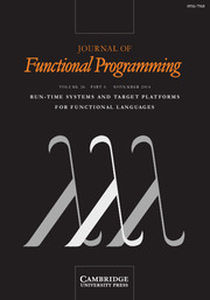Article contents
Explainable dynamic programming
Published online by Cambridge University Press: 18 May 2021
Abstract
In this paper, we present a method for explaining the results produced by dynamic programming (DP) algorithms. Our approach is based on retaining a granular representation of values that are aggregated during program execution. The explanations that are created from the granular representations can answer questions of why one result was obtained instead of another and therefore can increase the confidence in the correctness of program results.
Our focus on dynamic programming is motivated by the fact that dynamic programming offers a systematic approach to implementing a large class of optimization algorithms which produce decisions based on aggregated value comparisons. It is those decisions that the granular representation can help explain. Moreover, the fact that dynamic programming can be formalized using semirings supports the creation of a Haskell library for dynamic programming that has two important features. First, it allows programmers to specify programs by recurrence relationships from which efficient implementations are derived automatically. Second, the dynamic programs can be formulated generically (as type classes), which supports the smooth transition from programs that only produce result to programs that can run with granular representation and also produce explanations. Finally, we also demonstrate how to anticipate user questions about program results and how to produce corresponding explanations automatically in advance.
Information
- Type
- Research Article
- Information
- Copyright
- © The Author(s) 2021. Published by Cambridge University Press
References
- 6
- Cited by



Discussions
No Discussions have been published for this article.